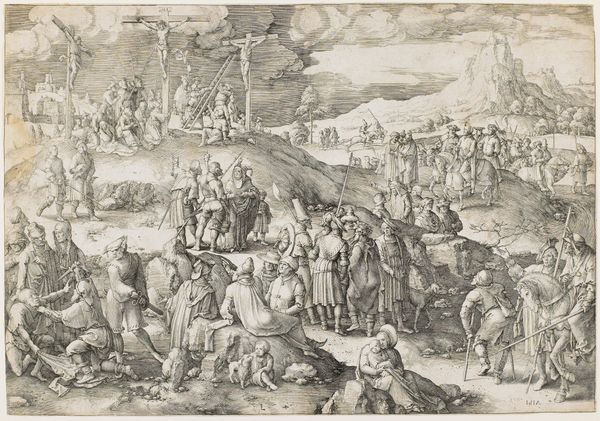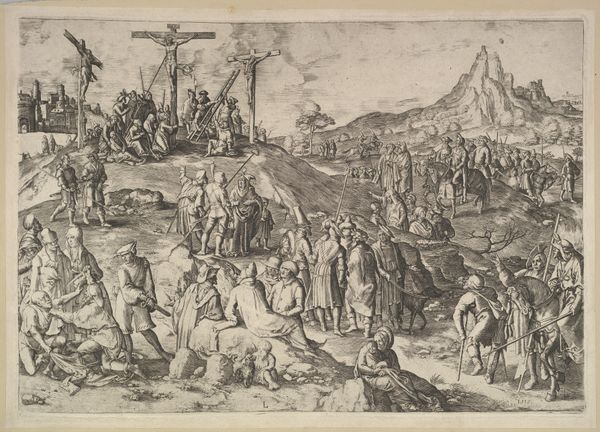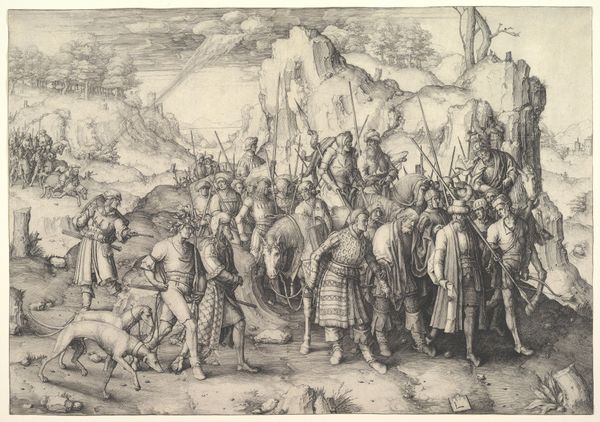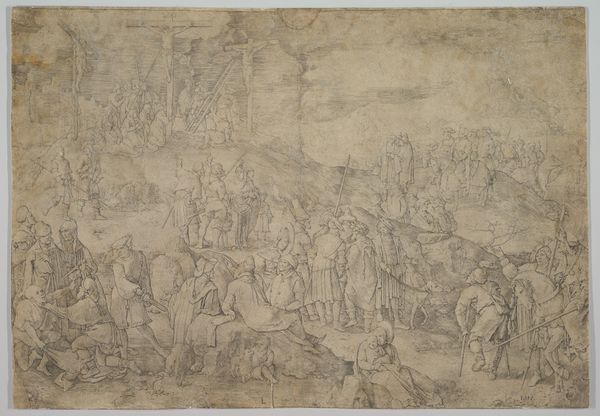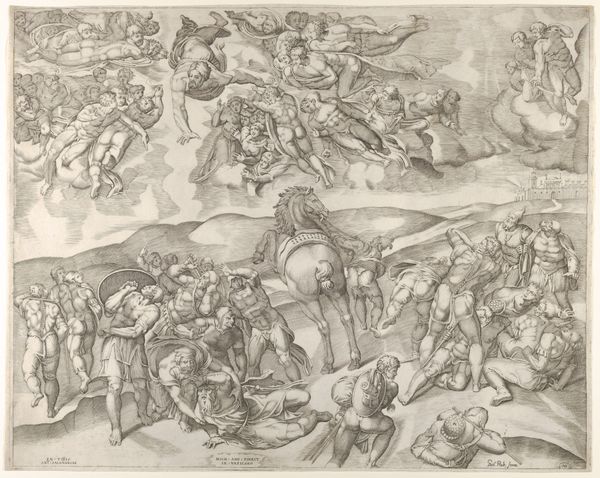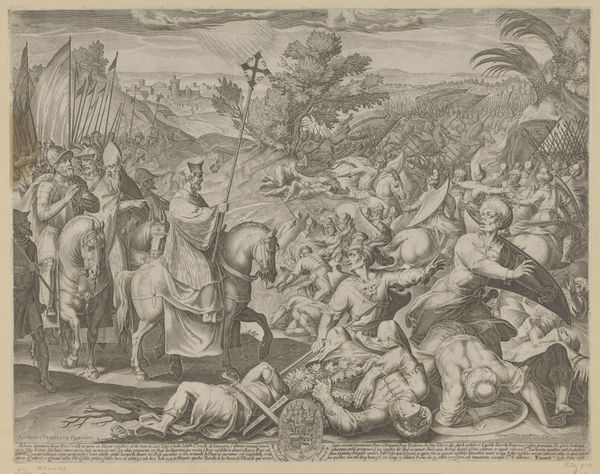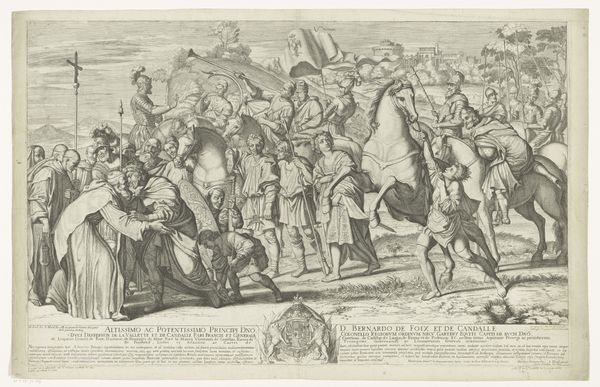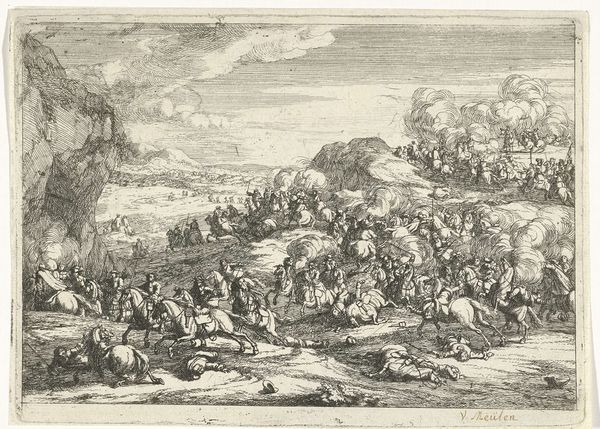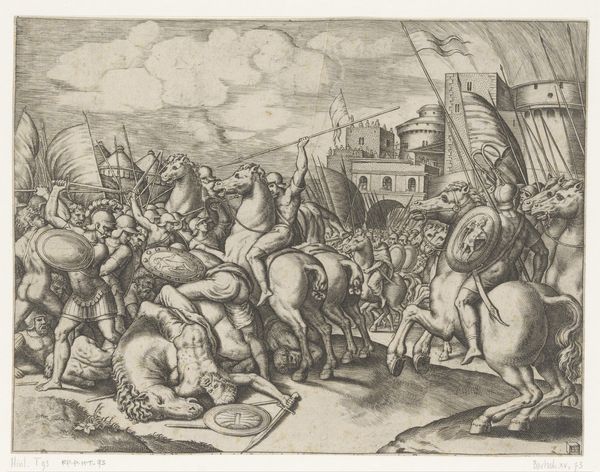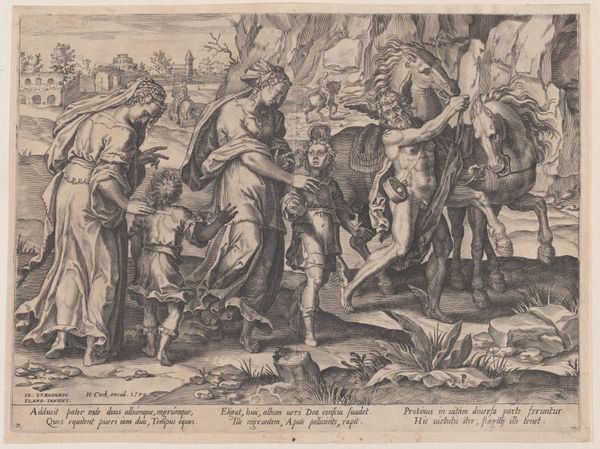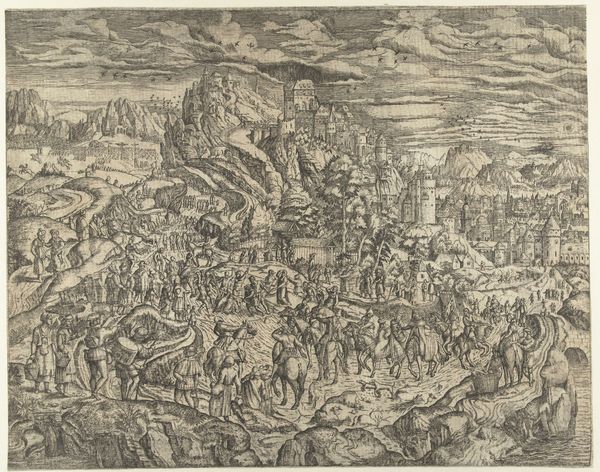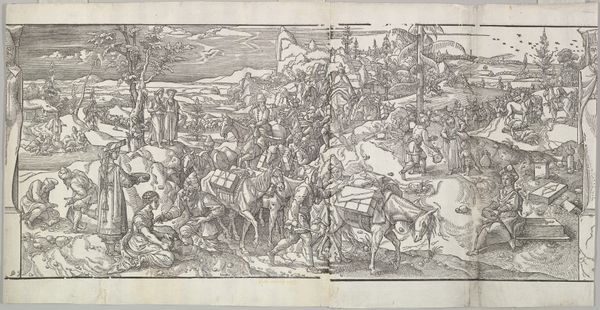
drawing, print, etching, intaglio
#
drawing
#
ink drawing
#
narrative-art
# print
#
etching
#
intaglio
#
landscape
#
crucifixion
#
history-painting
#
northern-renaissance
#
christ
Copyright: Public Domain
Curator: At first glance, this looks like one of those huge history paintings, all dramatic and staged. I wonder what the real story is beyond the surface. Editor: You're right about the drama. And that is very much the intent in "Calvary (Golgotha)" by Lucas van Leyden, created in 1517. What we're seeing is an etching, an intaglio print that packs in a LOT of detail. The Met is lucky to have it. Curator: Detail is right! I am so drawn to the landscape; the artist made it so much more than background to a known, terrible event. Almost turns it into its own character in the story. Editor: Landscapes held powerful symbolism in the Northern Renaissance. But in the 16th century, representations of landscapes weren't just backdrops but imbued with religious or moral meanings. The barren hill, that jagged peak in the back...it echoes the emotional harshness of the scene. The choice to showcase Christ's death, through etching, highlights the politics of images at the time. The ability to reproduce a scene like this on a potentially large scale created waves, shaping how folks connected with Biblical narratives. Curator: Shaping is putting it mildly! Religious imagery at the time served more than a personal, internal, connection to belief. In those chaotic scenes, the individual felt less alone, more unified through shared imagery. Editor: It definitely speaks to something deeply ingrained in the human experience – the need to find common ground in moments of despair or triumph. Look at the people van Leyden positions around the foot of the crosses – how do you see that coming through? Curator: The reactions run the full gamut of human emotion: despair, mourning, indifference. It makes you question who is present during the pivotal moments. Editor: Right – the print pushes us to really reflect not just on the historical narrative but our place within the continuing story. I appreciate the work on display and am already noticing and pondering things that went completely unnoticed initially. Curator: Absolutely. It is amazing how a closer inspection can completely flip our initial reading.
Comments
No comments
Be the first to comment and join the conversation on the ultimate creative platform.
